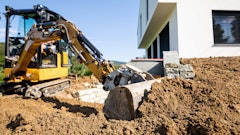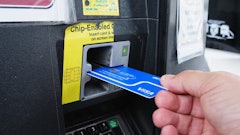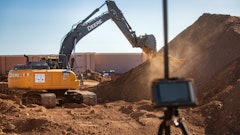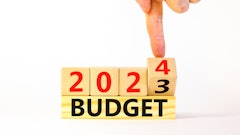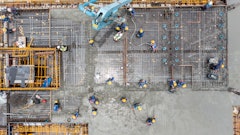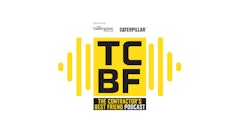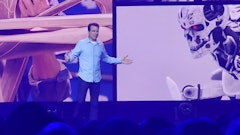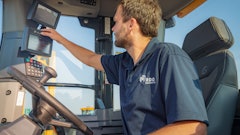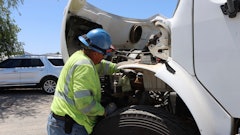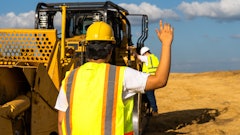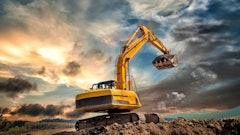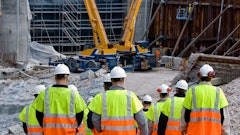Spent any time out in your equipment yard lately? If so, what do you see? Me, I see dollar signs — dollars you have invested and dollars you can put in your pocket if you make a few changes in how you utilize equipment.
I produced an equipment rental seminar a few weeks ago, and we got into a discussion about when contractors should consider equipment rental over equipment ownership. Of course, the conversation converged on when and how a contractor can make money with rental.
As part of the rental discussion, the “European Model” of extensively (70+%) using rental was brought up. Get the job, rent the equipment you need to complete the work and return the equipment when finished. As a result, you know your exact costs for equipment utilization for that job and similar jobs in future.
It is estimated that rental now covers 40% of equipment utilization for construction work in the U.S., with an expected 50% in the near future. It appears contractors have a new appreciation of rental now that work is hard to come by, jobs are smaller, equipment needs are varied, working capital at a minimum and financing still tough to get. In short, contractors are figuring out that there is not enough steady work to justify ownership of equipment unless it has at least a 70% utilization rate.
Know Your Utilization
Do you track the daily use of your equipment? Do you know your time utilization for each large piece of equipment and for the “lots” of smaller units? I don’t care how you do it, but do it. Use 28-day cycles, 22-day cycles or 176 hours. While it makes sense to project this utilization, the more practical and logical method would be to use actual time from completed jobs in the trailing 12 months.
Rental companies consider a unit with 75% utilization a keeper, 65% a maybe and 50% a contender for the auction house. Your analysis should be somewhat similar and maybe less conservative, with the bottom line being the actual amount of revenues earned for the equipment in terms of profitability of the job. If you charge the job for equipment costs and recover them, and you recovered enough throughout the year to cover the owning and operating cost of the equipment and anticipate doing so for the near future, then I guess that is a keeper.
Units you track that do not cover both the cost of ownership and operation have to be given further consideration — do you keep them or get rid of them? Capital right now is at a premium and you don’t need to put money into equipment that is not paying for itself.
Calculate Your Costs
Ownership costs are fixed, whether you use the unit or not. It is the acquisition cost net of the residual amortized over 5 years. In terms of cash, it is the debt service (P+I) which ignores residual value. Add the insurance and storage costs and you pretty much have your total ownership cost.
For example, a $100,000 unit would have a $25,000 cash cost for debt service plus another $5,000 for storage, insurance, taxes, etc., so your total cost of ownership for this unit is $30,000. Based on a 2,000-hour year and an expected 70% time utilization, you would arrive at an hourly charge of $16.70 for ownership at this utilization level.
Operating costs include parts, tires, preventive maintenance and normal wear and tear. Again, estimate the annual costs for these items and then calculate them based on the expected hours of use for the year. In our example, this would be 1,500 hours. It is possible the hourly operating rate could be in the $30 per hour range considering expense levels for a machine in the first five years of its useful life.
Combining both the ownership and operating costs gives you a $46 per hour cost for 1,500 hours of actual use. Use it for a day and it costs you $368. Let it sit for a day and it costs you $136. Use it for 15 days in a month and it costs you $5,500.
These calculations were based on a unit in the $100,000 range. A rental of the same unit would cost $3,500 to $4,500 for a 28-day billing cycle; $1,100 to $1,500 for a week; and $350 to $450 per day.
Think Carefully
Of course, these are rough cost estimates and need to be adjusted for the value and type of equipment in use. It should, however, give you something to think about when you consider the cost of rental. It isn’t as bad as you think.
If you’re wondering how these rental rates can be what they are, consider that the rental company:
• did not pay what you did for the unit;
• is in the business of maintaining equipment;
• pays less for parts;
• will deliver and pick up the equipment with trucks that are highly utilized;
• gets rid of high-maintenance units;
• and has efficient techs to maintain the units.
Maybe that 70% ratio is closer than you think. Do you feel those dollars in your pocket yet?




